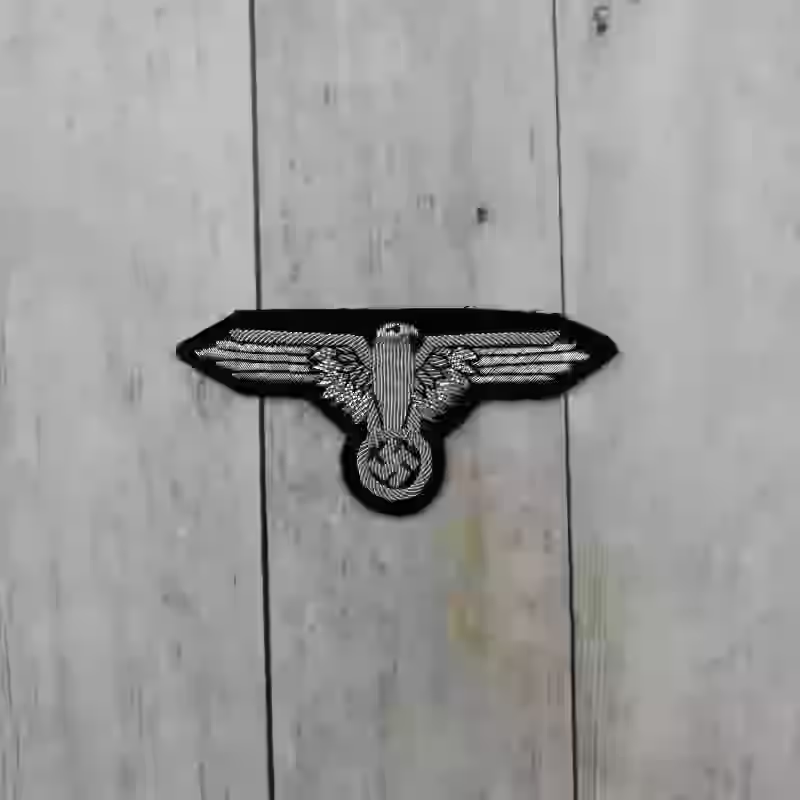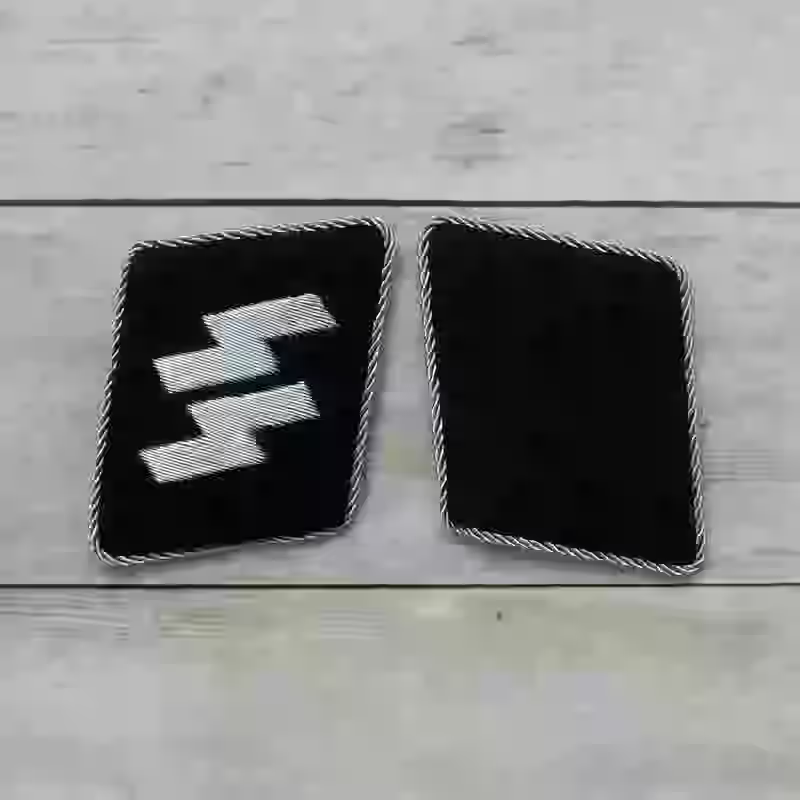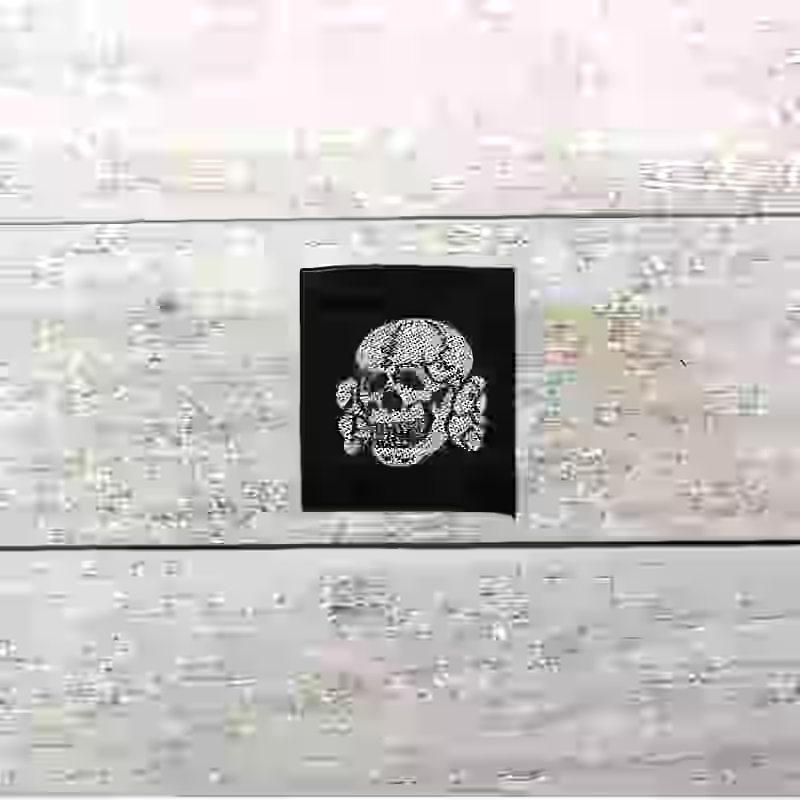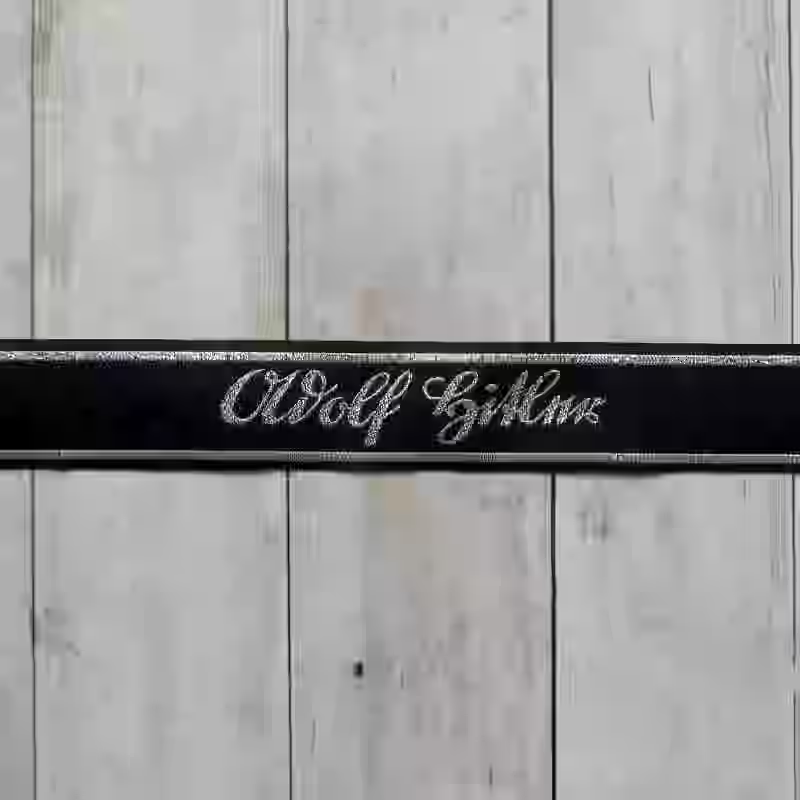
Waffen-SS Officer's Hand Embroidered Sleeve Eagle
12.95 €
Elevate your collection with this Waffen-SS officer’s hand-embroidered sleeve eagle, a masterfully crafted WWII German military collectible. This insignia, designed for the uniforms of commissioned officers of the Waffen-SS, features a meticulously hand-embroidered eagle with outstretched wings clutching a swastika, symbolizing the power and prestige of the Schutzstaffel (SS). Worn on the left sleeve of officer tunics, this emblem reflects the complex and sobering legacy of the Third Reich’s elite military forces. Below, we explore its historical significance, material composition, and enduring value for collectors and historians.
Historical Background
The Waffen-SS officer’s sleeve eagle was worn by commissioned officers of the Waffen-SS, the combat arm of Nazi Germany’s Schutzstaffel (SS), from 1934 to 1945. This insignia adorned the uniforms of officers in elite divisions such as the 1st SS Panzer Division “Leibstandarte SS Adolf Hitler,” the 2nd SS Panzer Division “Das Reich,” and the 3rd SS Panzer Division “Totenkopf,” among others. Worn by ranks such as Obersturmführer (First Lieutenant) to Standartenführer (Colonel), the sleeve eagle was a prominent feature on field-grey or black tunics, introduced with the SS’s standardized uniforms in 1934.
The eagle, clutching a swastika within a wreath, was a potent symbol of the Waffen-SS’s authority and ideological commitment to the Nazi regime. Unlike the Wehrmacht’s eagle, which faced right, the SS eagle faced left, emphasizing the organization’s distinct identity. Chosen by Heinrich Himmler, the design drew on Germanic and imperial imagery to project power, dominance, and historical continuity. The sleeve eagle was a badge of prestige, marking the wearer as part of an elite force that fought in major WWII campaigns, from the invasion of France to the Eastern Front’s brutal battles. As a Waffen-SS insignia, it underscored the SS’s role as both a military and ideological institution.
Material & Condition
This Waffen-SS sleeve eagle is crafted with hand-embroidered aluminum wire, forming the eagle’s outstretched wings, body, and swastika, set against a black wool background. Measuring approximately 9 cm wide by 4 cm tall, the insignia is designed to fit the left sleeve of officer tunics, including models from 1934 onward. The hand-embroidery technique, prevalent in early war production (1934–1942), showcases exceptional craftsmanship, with the silver wire creating a lustrous, raised effect. Later war examples (1943–1945) occasionally used machine embroidery to meet production demands, though officer insignia retained superior quality with fine aluminum detailing.
Authentic period pieces may exhibit signs of aging, such as slight tarnishing of the aluminum wire, fading of the black wool, or minor fraying along the edges. Collectors should distinguish originals from reproductions, which may feature overly uniform stitching or synthetic materials. Genuine eagles often show subtle imperfections, such as slight variations in wing curvature or swastika alignment, reflecting wartime craftsmanship by specialized German textile workshops, such as those in Munich or Berlin. These characteristics make the sleeve eagle a prized historical German artifact for collectors seeking authenticity.
Collector’s Insight
The Waffen-SS officer’s hand-embroidered sleeve eagle is highly coveted as Third Reich memorabilia due to its rarity, exquisite craftsmanship, and direct association with the elite officer corps of the Waffen-SS. Its historical significance, tied to the ideological and military legacy of divisions like “Leibstandarte” and “Totenkopf,” makes it a focal point for serious collectors of WWII German military collectibles. The hand-embroidered aluminum wire and precise detailing further enhance its appeal as a testament to wartime textile artistry.
This insignia attracts military historians, museum curators, and reenactors seeking period-accurate components for authentic uniforms. Given its sensitive historical context, collectors are urged to handle this artifact with respect, using it to educate about the complexities of WWII rather than glorifying the associated ideology. For preservation, store the eagle in an acid-free, archival-quality sleeve or display case to protect against moisture, UV light, and oxidation of the aluminum wire. Displaying this Waffen-SS insignia in a museum-quality shadow box with historical documentation enhances its educational value, offering a tangible link to a pivotal and tumultuous era.
Historical reproductions only. Janoor Militaria does not endorse the ideologies of Nazi Germany or any extremist groups.


